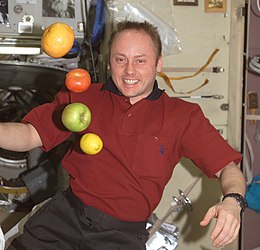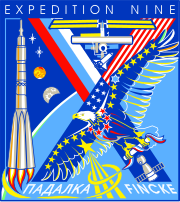
Yuri Ivanovich Malenchenko is a retired Russian cosmonaut. Malenchenko became the first person to marry in space, on 10 August 2003, when he married Ekaterina Dmitrieva, who was in Texas, while he was 240 miles over New Zealand, on the International Space Station. As of June 2016, Malenchenko ranks second for career time in space due to his time on both Mir and the International Space Station (ISS). He is a former Commander of the International Space Station.

Yury Valentinovich Lonchakov is a Russian former cosmonaut and a veteran of three space missions. He has spent 200 days in space and has conducted two career spacewalks.

André Kuipers is a Dutch physician and ESA astronaut. He became the second Dutch citizen, third Dutch-born and fifth Dutch-speaking astronaut upon launch of Soyuz TMA-4 on 19 April 2004. Kuipers returned to Earth aboard Soyuz TMA-3 11 days later.
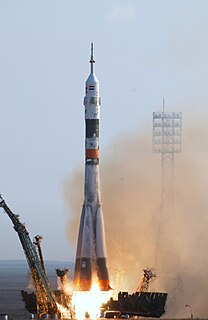
Soyuz TMA-4 was a Soyuz mission to the International Space Station (ISS) launched by a Soyuz FG launch vehicle. It was launched on April 19, 2004 (UTC) from Baikonur Cosmodrome. Gennady Padalka from Russia, Michael Fincke from the US and André Kuipers from the Netherlands were flown to the International Space Station. Kuipers returned to Earth 9 days later together with ISS crew 8 with the re-entry module of the Soyuz TMA-3, the other two stayed as ISS crew 9. The craft landed October 24, 2004 with Padalka, Fincke and Yuri Shargin aboard.

Gennady Ivanovich Padalka is a Russian Air Force officer and an Roscosmos cosmonaut. Padalka currently holds the world record for the most time spent in space, at 879 days. He worked on both Mir and the International Space Station.

Edward Michael "Mike"/"Spanky" Fincke is an American astronaut who formerly held the American record for the most time in space. His record was broken by Scott Kelly on October 16, 2015. In January 2019 Fincke was selected to fly on the first crewed flight of Boeing's CST-100 Starliner.

Expedition 8 was the eighth expedition to the International Space Station.
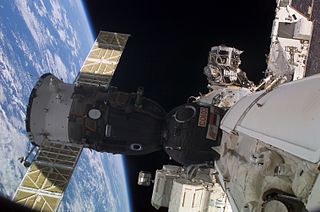
Expedition 7 was the seventh expedition to the International Space Station.

Expedition 10 (2004–2005) was the tenth expedition to the International Space Station, using the Soyuz TMA-5, which stayed during the expedition for emergency evacuation.
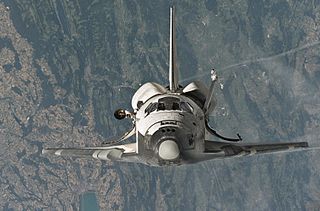
Expedition 11 (2005) was the 11th expedition to the International Space Station, using the Soyuz TMA-6, which stayed during the expedition for emergency evacuation.

Soichi Noguchi is a Japanese aeronautical engineer and JAXA astronaut. His first spaceflight was as a Mission Specialist aboard STS-114 on 26 July 2005 for NASA's first "return to flight" Space Shuttle mission after the Columbia disaster. He was also in space as part of the Soyuz TMA-17 crew and Expedition 22 to the International Space Station (ISS), returning to Earth on 2 June 2010. He is the sixth Japanese astronaut to fly in space, the fifth to fly on the Space Shuttle, and the first to fly on Crew Dragon.

Akihiko Hoshide is a Japanese engineer, JAXA astronaut, and former Commander of the International Space Station. On August 30, 2012, Hoshide became the third Japanese astronaut to walk in space.
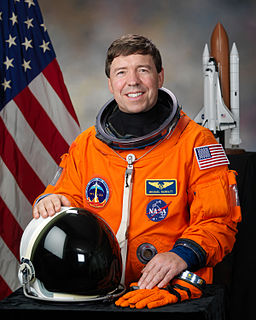
Michael Reed Barratt is an American physician and a NASA astronaut. Specializing in aerospace medicine, he served as a flight surgeon for NASA before his selection as an astronaut, and has played a role in developing NASA's space medicine programs for both the Shuttle-Mir Program and International Space Station. His first spaceflight was a long-duration mission to the International Space Station, as a Flight Engineer in the Expedition 19 and 20 crew. In March 2011, Barratt completed his second spaceflight as a crew member of STS-133.
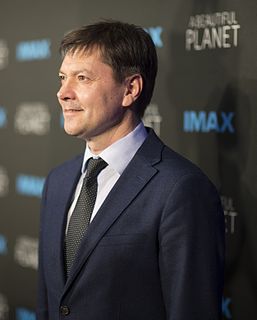
Oleg Dmitriyevich Kononenko is a Russian cosmonaut from the Turkmen SSR. He has flown to the International Space Station four times, as a flight engineer for Expedition 17 aboard Soyuz TMA-12, as a flight engineer on Expedition 30 and commander of Expedition 31 aboard Soyuz TMA-03M, as a flight engineer on Expedition 44 and Expedition 45 aboard Soyuz TMA-17M, and as commander of Expedition 58 and Expedition 59 aboard Soyuz MS-11. Kononenko accumulated over 736 days in orbit during his four long duration flights to ISS.

Expedition 18 was the 18th permanent crew of the International Space Station (ISS). The first two crew members, Michael Fincke, and Yuri Lonchakov were launched on 12 October 2008, aboard Soyuz TMA-13. With them was astronaut Sandra Magnus, who joined the Expedition 18 crew after launching on STS-126 and remained until departing on STS-119 on 25 March 2009. She was replaced by JAXA astronaut Koichi Wakata, who arrived at the ISS on STS-119 on 17 March 2009. Gregory Chamitoff, who joined Expedition 18 after Expedition 17 left the station, ended his stay aboard ISS and returned to Earth with the STS-126 crew.

STS-134 was the penultimate mission of NASA's Space Shuttle program and the 25th and last spaceflight of Space ShuttleEndeavour. This flight delivered the Alpha Magnetic Spectrometer and an ExPRESS Logistics Carrier to the International Space Station. Mark Kelly served as the mission commander. STS-134 was expected to be the final space shuttle mission if STS-135 did not receive funding from Congress. However, in February 2011, NASA stated that STS-135 would fly "regardless" of the funding situation. STS-135, flown by Atlantis, took advantage of the processing for STS-335, the Launch on Need mission that would have been necessary if the STS-134 crew became stranded in orbit.

NASA Astronaut Group 16 was a group of 44 astronauts announced by NASA on May 1, 1996. The class was nicknamed "The Sardines" for being such a large class, humorously implying that their training sessions would be as tightly packed as sardines in a can. These 44 candidates compose the largest astronaut class to date. NASA selected so many candidates in preparation for the anticipated need for ISS crew members, along with regular shuttle needs. Nine of the 44 astronauts selected were from other countries including 5 from Europe and 2 from Canada and Japan.

Soyuz TMA-03M was a spaceflight to the International Space Station (ISS). It launched on 21 December 2011 from Site One at the Baikonur Cosmodrome, Kazakhstan, carrying three members of Expedition 30 to the ISS. TMA-03M was the 112th flight of a Russian Soyuz spacecraft, since the first in 1967, and the third flight of the modernised Soyuz-TMA-M version. The docking with the International Space Station took place at 19:19 Moscow Time on 23 December, three minutes ahead of schedule.

Expedition 30 was the 30th long-duration mission to the International Space Station (ISS). The expedition's first three crew members – Dan Burbank, Anton Shkaplerov and Anatoli Ivanishin – arrived on the ISS aboard Soyuz TMA-22 on 16 November 2011, during the last phase of Expedition 29. Expedition 30 formally began on 21 November 2011, with the departure from the ISS of the Soyuz TMA-02M spacecraft. The expedition ended on 27 April 2012, as Burbank, Shkaplerov and Ivanishin departed from the ISS aboard Soyuz TMA-22, marking the beginning of Expedition 31.

Expedition 31 was the 31st long-duration expedition to the International Space Station (ISS). It began on 27 April 2012 with the departure from the ISS of the Soyuz TMA-22 spacecraft, which returned the Expedition 30 crew to Earth. The expedition ended on 1 July 2012, when crew members Oleg Kononenko, André Kuipers and Don Pettit departed from the ISS aboard Soyuz TMA-03M, marking the beginning of Expedition 32.
